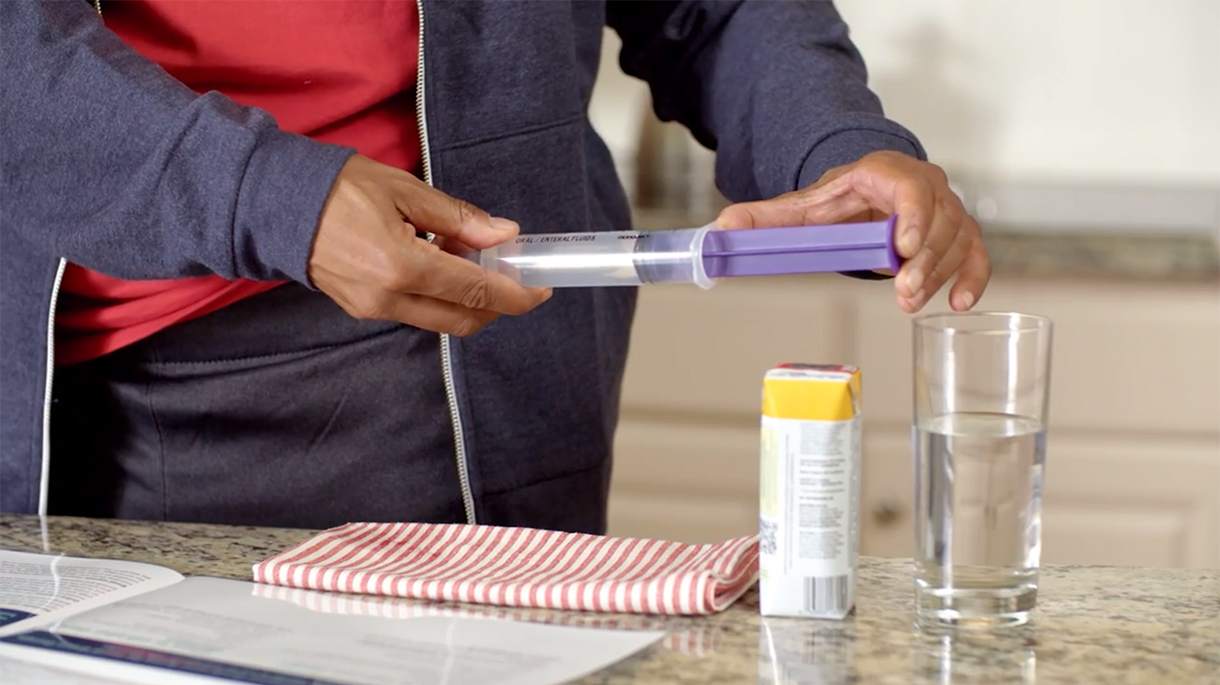What Is Home Enteral Nutrition And How Does It Optimize Health At Home?
Discover the essential information about what is enteral nutrition, including its benefits, uses, and importance in maintaining health and well-being from the comfort of one's own home.
Author:James PierceReviewer:Karan EmeryFeb 25, 2024280 Shares11.6K Views

For those who are unable to ingest enough nutrition orally, home enteral nutrition is a crucial medical intervention that provides vital nutrients. By guaranteeing that patients receive the nutrients required for good health and well-being, this specialized kind of nutrition support provides a lifeline to patients experiencing a variety of medical difficulties.
So what is home enteral nutrition? Let's look at the goals, techniques, and advantages for patients who require it, but first, let's define it.
Home enteral nutrition is essential for improving the quality of life for those who need nutritional support beyond what they get from their regular diet, both in terms of aiding recovery and managing chronic diseases. Together, we will explore the foundational elements of home enteral nutrition and how it significantly affects patient outcomes and care.
6 Benefits Of Home Enteral Nutrition
- Enhanced Consumption of Nutrients- Even if a person has trouble eating or absorbing nutrients orally, home enteral nutrition offers them a dependable and constant source of vital nutrients, guaranteeing that they get enough nutrition. This all-encompassing nutritional assistance promotes recovery, guards against malnutrition, and helps sustain general health.
- Comfort and Convenience- Getting nutrition supplementation at home is far more convenient and comfortable than being admitted to the hospital or other healthcare facility. In the comfort of their own homes, patients can receive individualized care from medical specialists while taking advantage of the familiarity and comfort of their surroundings.
- Improved Standard of Living- With home enteral nutrition, people can continue to manage their nutritional needs independently and autonomously. Home enteral feeding improves quality of life by avoiding disturbances to patients' routines and fostering a sense of normalcy by enabling them to stay at home and carry out their daily activities.
- Decrease in Hospitalization- With home enteral nutrition, patients can get the essential nutrition support without having to be in the hospital for extended periods of time. In addition to lowering medical expenses, this enables patients to recuperate in the company of their loved ones in a comfortable and familiar setting.
- Successful Recuperation - Recovery from disease, trauma, or surgery depends heavily on nutritional support. By ensuring that patients get the vital nutrients their bodies require to heal and recover, home enteral nutrition helps patients recover more quickly and achieve better results overall.
- Tailored Dietary Assistance- The capacity to customize nutritional support to each person's unique dietary needs and health goals is one of the main benefits of home enteral nutrition. To meet each patient's specific needs, healthcare providers collaborate closely with patients to create individualized nutrition regimens and choose the best enteral formulas.

7 Types Of Home Enteral Nutrition
Enteral Tube Feeding
This is also referred to as tube feeding, is the process of administering liquid nutritional formulae directly into the small intestine or stomach via a feeding tube. This is an appropriate technique for people with medical issues like dysphagia, neurological abnormalities, or severe malnutrition that prevent them from eating orally.
Nasogastric Tube Feeding
In this method, a feeding tube is inserted into the stomach through the nostrils. For patients who need emergency assistance to satisfy their nutritional needs, this temporary feeding technique may be employed as a short-term nutritional support.
Nasojejunal Tube Feeding
In this method, a feeding tube is inserted into the jejunum, a portion of the small intestine, through the nose. Those with impaired gastric motility or gastric intolerance may benefit from this stomach-bypassing technique.
Gastrostomy Tube Feeding
This method entails making a little abdominal wall incision and inserting a feeding tube straight into the stomach. Patients who are unable to tolerate nasogastric tube feeding and who need long-term or permanent enteral nutrition support can benefit from this approach.
Jejunostomy Tube Feeding
This type of feeding entails a surgical operation to insert a feeding tube straight into the jejunum. Patients with severe dyspepsia or stomach problems may benefit from this technique, which circumvents the duodenum and stomach.
PEG Tube Feeding
Using endoscopic guidance, a feeding tube is inserted directly into the stomach through the abdominal wall during a minimally invasive operation known as percutaneous endoscopic gastrostomy (PEG) tube feeding. This technique is frequently applied to patients who need continuous feeding support for long-term enteral nutrition.
PEJ Tube Feeding
Using endoscopic guidance, a feeding tube is inserted directly into the jejunum during percutaneous endoscopic jejunostomy (PEJ) tube feeding. Patients who need post-pyloric feeding or have stomach intolerance may employ this technique.
Situations That Call For Enteral Nutrition At Home
Chronic Illnesses
Due to the underlying disease process, people with chronic illnesses including HIV/AIDS, cystic fibrosis, or chronic obstructive pulmonary disease (COPD) may have weak appetites, weight loss, and eating difficulties. Essential nutrients are supplied through home enteral feeding to meet their nutritional needs and preserve general health.
Neurological Disorders
People with neurological conditions including stroke, Parkinson's disease, or amyotrophic lateral sclerosis (ALS) may experience dysphagia, which is a condition that makes it difficult for a person to eat or drink securely. In order to minimize the danger of aspiration and malnutrition, home enteral nutrition ensures that patients obtain appropriate nourishment.
Gastrointestinal Illnesses
Due to malabsorption, vitamin shortages, and reduced gastrointestinal function, digestive illnesses including Crohn's disease, ulcerative colitis, or small bowel syndrome may require other forms of nutrition assistance. To address patients' nutritional demands, home enteral nutrition offers a safe and efficient way to deliver nutrients straight into the gastrointestinal system.
Cancer Treatments
Patients receiving chemotherapy, radiation therapy, or surgery may experience adverse effects that include nausea, vomiting, mouth sores, and difficulty swallowing. As a result, it may be difficult for them to consume enough food orally. With the provision of vital nutrients to maintain strength, stop weight loss, and boost immunity, home enteral nutrition supports patients during their cancer treatment.
Severe Malnutrition
To restore their nutritional status and encourage recovery, people who suffer from severe malnutrition as a result of extended fasting, insufficient food consumption, or metabolic problems may need intensive nutritional care. A secure and efficient method of providing calories, protein, vitamins, and minerals to aid in healing and rehabilitation is through home enteral nutrition.
Dysphagia
A number of illnesses, such as stroke, neurological problems, and head and neck malignancies, can cause dysphagia, or trouble swallowing. In order to ensure that patients obtain the necessary nourishment while lowering their risk of aspiration and choking, home enteral feeding offers a secure and efficient method of avoiding the swallowing process and delivering nutrients straight into the gastrointestinal system.
FAQs About What Is Home Enteral Nutrition
Is Enteral Nutrition At Home Limited To People With Very Serious Medical Conditions?
Patients with chronic illnesses or digestive disorders are frequently recommended home enteral nutrition; but, it can also be prescribed for those recovering from surgery or injury who are incapable of eating enough food via their mouths.
For What Length Of Time Can Someone Get Enteral Nourishment At Home?
The length of home enteral nutrition varies based on medical conditions and the demands of each patient. While some patients may depend on long-term enteral feeding for nutritional support, others may just need short-term assistance throughout their recuperation.
What Possible Drawbacks Might Enteral Nutrition At Home Have?
Gastrointestinal intolerance, infection, electrolyte imbalances, and tube dislodgment are among the complications linked to home enteral nutrition. Monitoring and appropriate education can help reduce these hazards.
Can Kids Get Enteral Nourishment At Home?
Children diagnosed with neurological problems affecting feeding and swallowing, congenital anomalies, or failure to thrive may benefit from home enteral nutrition.
Does Insurance Cover Enteral Nutrition At Home?
A lot of insurance policies cover the cost of nutritional formulae, feeding tubes, and related supplies for home enteral nutrition therapy. For precise information on your insurance coverage, it is best to contact your provider.
Conclusion
What is home enteral nutrition? This subject keeps coming up for those who want to understand people who are having trouble getting enough nutrients. For patients who are attempting to preserve their health and well-being in the comfort of their own homes, this investigation is a ray of hope and support.
Home enteral nutrition is a critical support system that helps people maintain their independence, dignity, and general quality of life through individualized care and creative solutions. By creating a link between medical care and everyday life, it guarantees that individuals who require assistance get the food and care they require in a comfortable and familiar setting.
Let us strive to uphold the principles of kindness, diversity, and excellence while navigating the ever changing healthcare industry.

James Pierce
Author

Karan Emery
Reviewer
Latest Articles
Popular Articles
